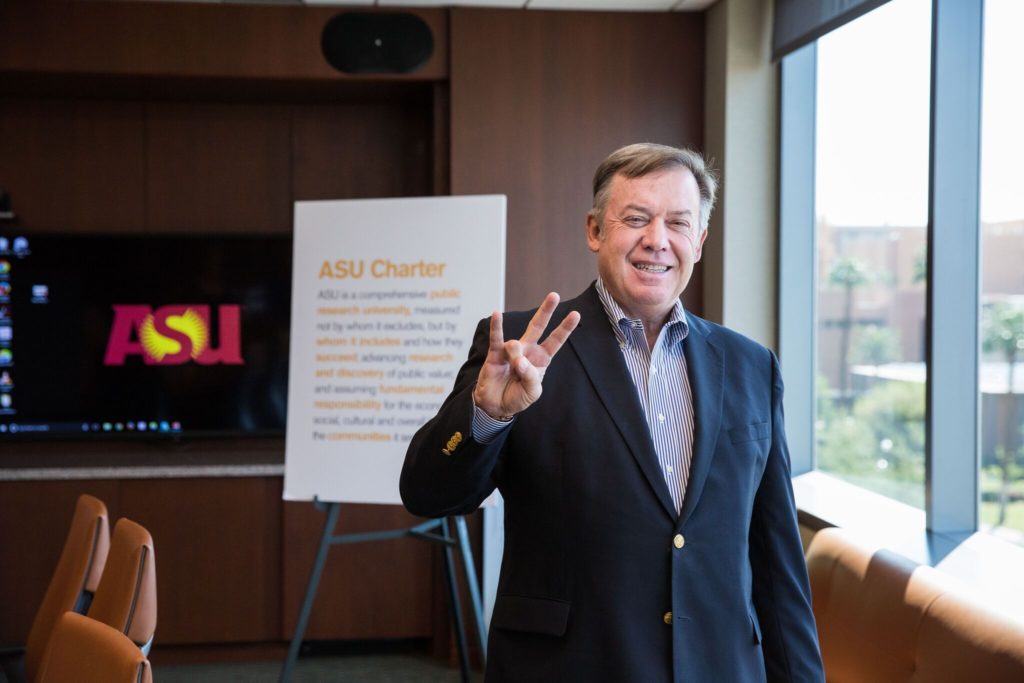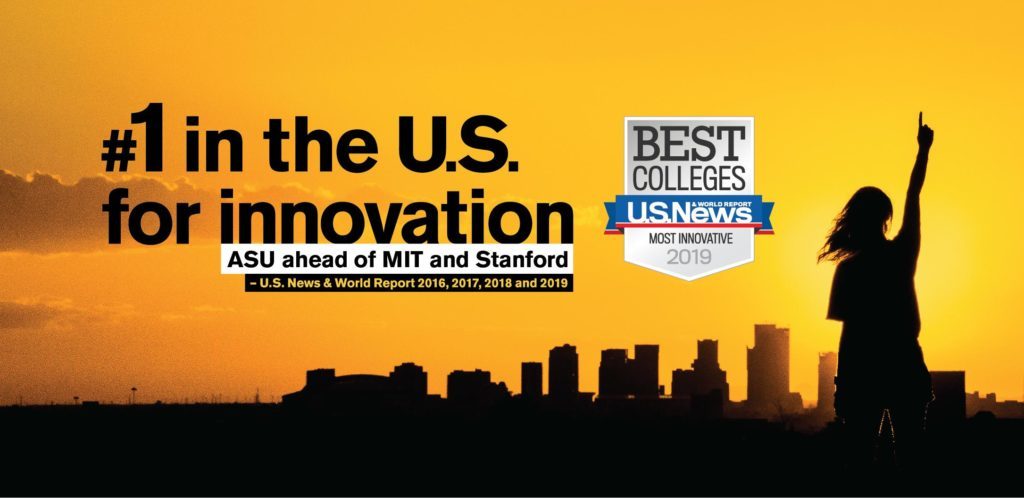
By Noah Kutz
To those who ask what ASU’s ranking “#1 in innovation” actually means, ask no further. Perhaps if you’ve seen a billboard or two (or three) on the Price Freeway, you may have noticed that Arizona State University has been rated first in innovation from US News and World Report for five consecutive years.
“Great,” says ASU student Lorenzo Rios, “so what does that actually mean?” Rios’ voice echoes that of countless other students, many of them turning the university’s capitalization on the achievement into a light-hearted joke.
Although these young scholars now exploit the ranking by sarcastically granting their friends nicknames like “innovator” when they complete insignificant tasks, the real-life accomplishments from ASU President Michael Crow are no joke.
In his recent presentation to the Chandler Chamber of Commerce, Crow highlighted
the numerous ways that he and his staff have worked toward putting Arizona State at the top of America’s list of robust academic institutions.
Crow served as deputy provost and a senior faculty member of Columbia University in New York City for 12 years before coming to ASU where he has been president for 17 years. Columbia, as Dr. Crow describes, was “too small an arena in too rigid a place,” despite the incredible opportunities he had there.
The level of success we desire in the United States, he says, will not emerge from the establishment institutions like Columbia University, but rather from new places that are able to do new things like ASU.
He continues, “The opportunity here and the reason that I was hired was to take this very large public university which had not yet matured and see if you could actually build a new kind of university.”
Building this new class of education in America is something ASU certainly has accomplished, with many well-established universities following Dr. Crow’s example of innovation.
 Becoming #1 in the U.S. for innovation is determined by a peer-based survey from Crow’s counterparts in other academic institutions.
Becoming #1 in the U.S. for innovation is determined by a peer-based survey from Crow’s counterparts in other academic institutions.
According to the U.S. News and World Report, nominees must demonstrate innovative ways within their campuses to improve in categories such as curriculum, students and faculty or campus facilities and technology.
Dr. Crow describes the process of growth and development as a long and hard-fought game, but the outcome has proven to be worth the fight.
“ASU today is one of the 10 most significant patentors of all universities on the planet. We weren’t even in the top several hundred when we started that process,” he says.
The university has also increased its research funding from $100 million per year to nearly $700 million which is more than major institutions such as UCLA, Princeton or Harvard, according to President Crow.
In terms of other innovative processes, ASU has also created the world’s first fully-accredited online electrical engineering degree for undergraduate students.
“This will allow us to teach world-class engineering to an electrician’s mate serving forward deployed on an aircraft carrier,” he says, referencing America’s servicemen and women who now have more opportunities to obtain an education while deployed overseas.
These achievements represent just a few of the incredible things that ASU has been able to accomplish over the years, but according to Dr. Crow, the work has only just begun.
“We have issues in Arizona. Huge, huge, huge issues. We grow and we think that’s economic growth. We attract people here and we say, ‘well that’s good.’ We build houses and apartments like there’s no tomorrow which is fine, but that’s not a sustainable economy.”
President Crow later continued to outline the ways that ASU must adapt to Arizona’s growth, and help drive the development in areas pertaining to technology, sustainability and the economy.
For Dr. Michael Crow’s full presentation at the Chandler Chamber of Commerce, visit their channel “Chandler Chamber AZ” on YouTube.


Just another bureaucrat making like the French lord in A Tale of Two Cities. It was said of him he was corpulent and had consumed a great mnay things including most of France. Here is the modern version Exhibit A